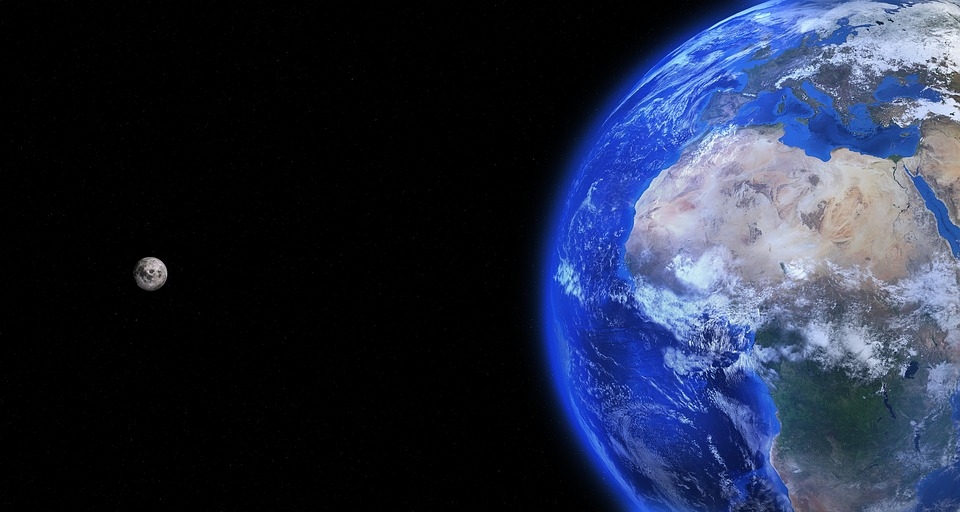This week, NASA announced the presence of water on the Moon, becoming a big breakthrough for future exploration. However, Russia has claimed that it had already found the presence of water on the lunar surface decades ago.
The discovery of water on the lunar surface, as NASA had announced, would be able to help the agency in setting up a Moon base by utilizing the resource. However, Russia’s state media has already claimed that the USSR has already made the discovery in the 1970s. The USSR’s Luna 24 satellite has already spotted traces of water back in 1976. Two years later in 1978, a study published in the journal of Academy of Sciences of the USSR, found that there were traces of water on the lunar surface. Sputnik also said that the Russian publication was more definitive compared to its English version.
The state media also said that due to the Cold War that was going on at the time, Soviet research would often be received with skepticism from the West. “If NASA scientists had read a bit more work from their Soviet colleagues, they might have realized that the Soviet Union’s Luna 24 probe made this discovery in 1976,” Said Sputnik. “The Union of Soviet Socialist Republics (USSR) dispatched dozens of probes to various objects in outer space, including the Moon and Venus, making major contributions to humanity’s knowledge of the Solar System.”
In 2011, Columbia University scientists have already touched on this discovery claimed by the USSR. Upon analyzing samples, they found that around 0.1 percent of lunar soil was made of water.
Aside from discoveries on the Moon, NASA’s satellites have also captured an occurrence happening in our own Sun. The agency’s Solar and Heliospheric Observatory spacecraft witnessed a coronal mass ejection in the Sun, that some scientists have described it as similar to the “Doomsday machine” seen on Star Trek. To note, in the series, the mechanical Doomsday Machine had a circular opening and a long tail.
Fortunately, the ejection was produced away from the direction of our planet. Had the particles hit Earth, it would have resulted in aurorae in either the north or southern polar regions.



 SpaceX Sues California Coastal Commission, Alleging Political Bias Over Falcon 9 Launch Denials
SpaceX Sues California Coastal Commission, Alleging Political Bias Over Falcon 9 Launch Denials  South Africa amended its research guidelines to allow for heritable human genome editing
South Africa amended its research guidelines to allow for heritable human genome editing  Urgent Alert: New COVID Variant Causes Alarming Symptoms—You Must Know This!
Urgent Alert: New COVID Variant Causes Alarming Symptoms—You Must Know This!  Astronomers just found complex carbon molecules in space – a step closer to deciphering the origins of life
Astronomers just found complex carbon molecules in space – a step closer to deciphering the origins of life  NASA & SpaceX Crew-8 Astronaut Hospitalized After Returning to Earth Following 235-Day Mission
NASA & SpaceX Crew-8 Astronaut Hospitalized After Returning to Earth Following 235-Day Mission  CDC Urges Second COVID-19 Vaccine for Seniors: ‘Protect Your Health This Season!’ Experts Say It’s Critical
CDC Urges Second COVID-19 Vaccine for Seniors: ‘Protect Your Health This Season!’ Experts Say It’s Critical  Elon Musk Surprised by SpaceX’s Successful First Attempt at Catching Starship Booster
Elon Musk Surprised by SpaceX’s Successful First Attempt at Catching Starship Booster  RNA editing is the next frontier in gene therapy – here’s what you need to know
RNA editing is the next frontier in gene therapy – here’s what you need to know  Unbelievable Discovery: Common Onion Could Slash Blood Sugar Levels by a Jaw-Dropping 50%
Unbelievable Discovery: Common Onion Could Slash Blood Sugar Levels by a Jaw-Dropping 50%  Why does everything look flat even though the Earth is round?
Why does everything look flat even though the Earth is round?  Breakfast Secrets: 'Fiber-rich Foods Are the Key to Weight Loss!' Experts Reveal Shocking Truth
Breakfast Secrets: 'Fiber-rich Foods Are the Key to Weight Loss!' Experts Reveal Shocking Truth  Global Space Powers Gather in Milan, Private Sector Joins the Race for Lunar Dominance
Global Space Powers Gather in Milan, Private Sector Joins the Race for Lunar Dominance  FAA Clears SpaceX Falcon 9 for Launches After Resolving Starlink and NASA Mission Mishaps
FAA Clears SpaceX Falcon 9 for Launches After Resolving Starlink and NASA Mission Mishaps  Starlink Services Target South Korea by 2025, Pending Regulatory Approval
Starlink Services Target South Korea by 2025, Pending Regulatory Approval  Nicotine Pouches Skyrocket in Popularity as Youth Tobacco Use Hits 25-Year Low — ‘This Is the New Trend,’ Experts Warn
Nicotine Pouches Skyrocket in Popularity as Youth Tobacco Use Hits 25-Year Low — ‘This Is the New Trend,’ Experts Warn  Just 21 Minutes of Cycling a Day Is 'All You Need' for Total Health, Claims Expert
Just 21 Minutes of Cycling a Day Is 'All You Need' for Total Health, Claims Expert 































